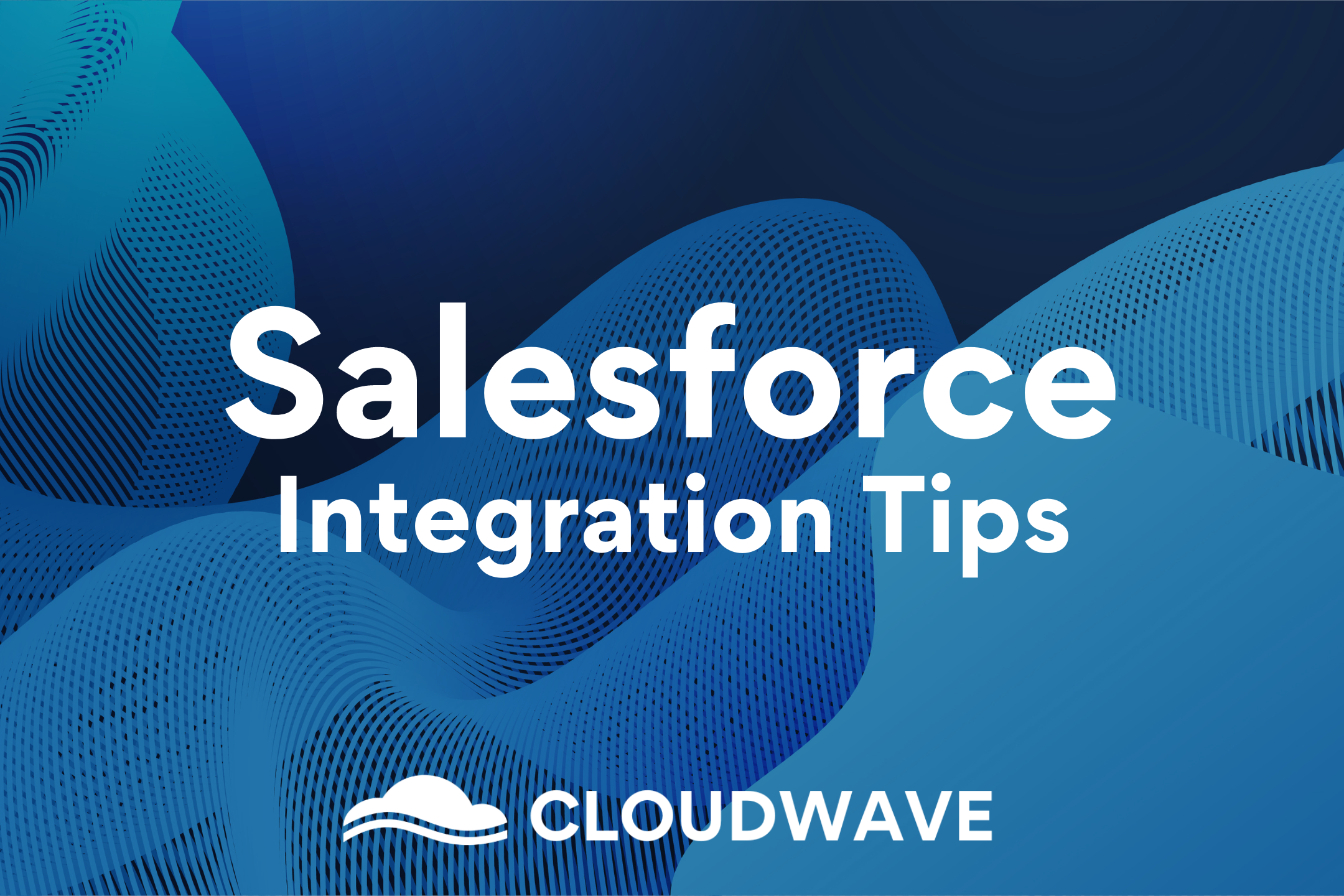6 Tips for Seamless Salesforce Integration

In today's interconnected business landscape, integrating systems and applications is essential for optimizing processes and enhancing customer experiences. Salesforce plays a pivotal role in managing customer interactions and data. To make the most of Salesforce's capabilities, seamless integration with other tools and systems is crucial. In this blog, we'll explore six tips for achieving a smooth and successful Salesforce integration.
1. Clearly define your integration goals.
Before you begin any integration project, it's imperative to define your goals. What outcomes are you aiming to achieve? Whether it's automating data transfers, improving customer support, or streamlining sales processes, having a clear understanding of your objectives will guide your integration strategy. This clarity ensures that you choose the right integration approach and tools for your specific needs.
2. Choose the right integration method.
Salesforce offers various integration methods, each suited to different use cases. These methods include:
1. API Integrations
Salesforce provides robust APIs (Application Programming Interfaces) that enable real-time data synchronization between Salesforce and other applications. REST and SOAP APIs are commonly used for this purpose.
2. Middleware and iPaaS
Integration platforms as a service (iPaaS) like MuleSoft and Boomi offer visual tools to connect Salesforce with other systems. These platforms simplify complex integrations and allow for quicker deployment.
3. Custom Integrations
For unique business requirements, custom integrations using technologies like webhooks or middleware frameworks might be necessary. These require more development effort but offer greater flexibility.
Choosing the right integration method depends on factors such as data volume, real-time requirements, and complexity.
3. Prioritize data quality and security.
During integration, maintaining data quality and security is paramount. Ensure that data mappings are accurate, and data transformations are well-defined to prevent errors or data loss. Implement encryption and authentication mechanisms to secure data in transit and at rest. Compliance with relevant data protection regulations, such as GDPR or HIPAA, should also be a top priority.
4. Plan for scalability and future growth.
As your business evolves, your integration needs might change. Plan your integration architecture with scalability in mind. This means designing your integrations to handle increased data loads, additional applications, and evolving business processes. Using asynchronous processing, load balancing, and scalable infrastructure can help your integrations handle growth seamlessly.
5. Monitor and maintain regularly.
Integration is an ongoing process, not a one-time task. Establish monitoring and maintenance practices to ensure that integrations continue to function smoothly. Set up alerts for error conditions, monitor data flow, and track performance metrics. Regularly review your integration processes and adjust them as needed based on changing requirements or technological advancements.
6. Find an experienced consulting partner.
Salesforce integration can be daunting and stressful if you are new to the platform. Partnering with an experienced consulting team can save you crucial time and ensure that both Salesforce and the other platform you want to integrate are connected and communicating correctly to prevent issues down the road. Help from a consulting partner can also be crucial if you need a tricky custom integration that doesn’t come naturally out of the box.
The Tools for Successful Salesforce Integration
Seamless Salesforce integration can significantly enhance your organization's efficiency and customer engagement. By following these six tips—clearly defining integration goals, choosing the right integration method, prioritizing data quality and security, planning for scalability, maintaining integrations regularly, and finding the right consulting partner to help you succeed—you'll be well-prepared to create a unified ecosystem that maximizes the potential of your Salesforce platform. Remember that integration is an ongoing journey, and staying adaptable and proactive will ensure your systems work together harmoniously to drive your business forward.
Salesforce Integration with CloudWave
If you are searching for the right consulting partner to help you with your Salesforce integration, reach out to our team at CloudWave. Our consultants have many years of Salesforce experience and have integrated with dozens of different platforms. We can tailor your integration to your unique business needs.